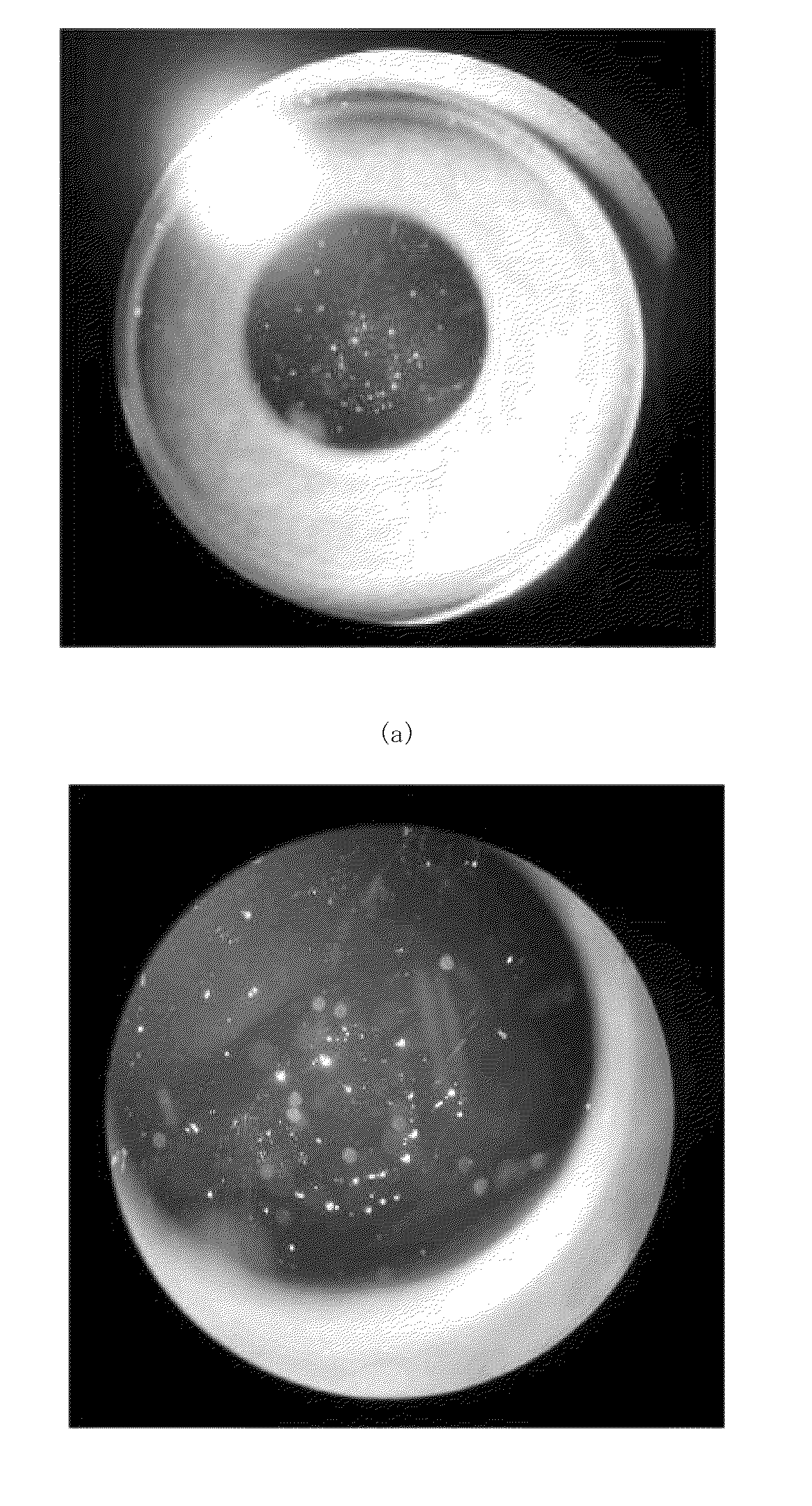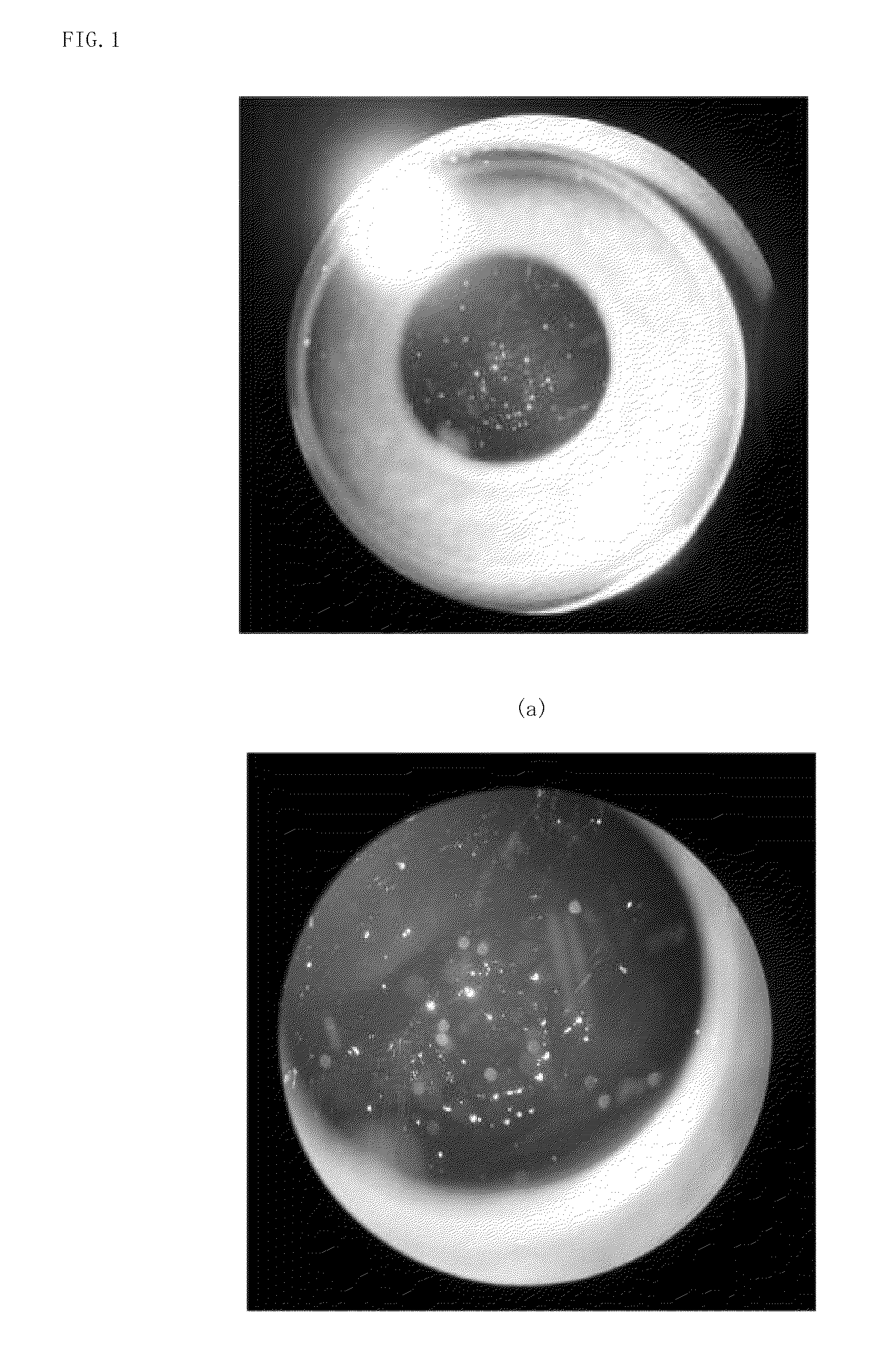Optical glass, precision press-molding preform, optical element and their production processes as well as image-sensing device
a technology of optical elements and press-molding preforms, applied in the direction of glass tempering apparatuses, instruments, glass rolling apparatuses, etc., can solve the problems of glass surface liable to damage, achieve excellent devitrification resistance and precision press-molding, prevent damage, and high refractivity
- Summary
- Abstract
- Description
- Claims
- Application Information
AI Technical Summary
Benefits of technology
Problems solved by technology
Method used
Image
Examples
example 1
[0153]Corresponding oxides, carbonates, sulfates, nitrates, hydroxides were used as raw materials for introducing components that would give glass compositions shown in Tables 1 to 7. The raw materials were weighed and fully mixed to prepare a formulated raw material, and it was placed in a platinum crucible, heated and melted. After melted, a molten glass was cast into a casting mold, and it was gradually cooled to a temperature around its glass transition temperature and was placed in an annealing furnace immediately thereafter to carry out annealing treatment in the range of transition temperature of the glass for about 1 hour. Then, the glass was allowed to cool in the furnace until its temperature reached room temperature. In this manner, optical glasses of glasses Nos. 1 to 47 were obtained.
[0154]In the thus-obtained optical glasses, no crystal observable through a microscope was deposited.
[0155]Tables 1 to 7 show various properties of the above-obtained optical glasses.
TABLE ...
example 2
[0168]Glass raw materials prepared so as to give the optical glasses produced in Example 1 were melted, clarified and homogenized to obtain molten glasses. Each molten glass was dropped from a nozzle made of platinum and received with a preform shaping mold, and a spherical preform was shaped while causing it to float by applying gas pressure. In this manner, spherical performs formed of the above various glasses were formed.
[0169]Further, the above molten glass was caused to continuously flow out of a pipe formed of platinum, its lower end portion was received with a preform, and after a narrow portion was formed in the molten glass flow, the preform receiving mold was moved rapidly vertically downward to cut the molten glass flow at the narrow portion. A separated glass gob was received on the preform shaping mold, and a preform was formed while it was caused to float by applying gas pressure. In this manner, preforms formed of the above various glasses were formed.
[0170]The thus-...
example 3
[0171]Molten glasses prepared in Example 2 were caused to continuously flow out and cast into casting molds to form glass blocks, and the glass blocks were annealed and cut to obtain a plurality of glass pieces each. These glass pieces were ground and polished to obtain preforms formed of the above various glasses.
[0172]The thus-obtained preforms were optically homogeneous and had high quality.
PUM
| Property | Measurement | Unit |
|---|---|---|
| refractive index nd | aaaaa | aaaaa |
| glass transition temperature | aaaaa | aaaaa |
| liquidus temperature | aaaaa | aaaaa |
Abstract
Description
Claims
Application Information
 Login to View More
Login to View More - R&D
- Intellectual Property
- Life Sciences
- Materials
- Tech Scout
- Unparalleled Data Quality
- Higher Quality Content
- 60% Fewer Hallucinations
Browse by: Latest US Patents, China's latest patents, Technical Efficacy Thesaurus, Application Domain, Technology Topic, Popular Technical Reports.
© 2025 PatSnap. All rights reserved.Legal|Privacy policy|Modern Slavery Act Transparency Statement|Sitemap|About US| Contact US: help@patsnap.com



